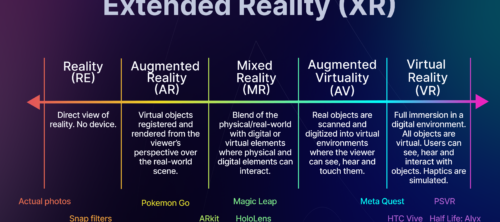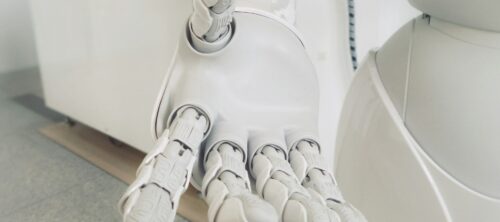
Seeing is believing: How is 3D design used in different industries in 2023?
So, before we get into the use cases and benefits, let’s start from the basics.
3D design refers to digital graphics that create a three-dimensional life-like representation of an object or environment, enabling augmented reality (AR) and virtual reality (VR) experiences and allowing users to interact with it from different angles. One of the main benefits of 3D design is its ability to enhance visualization and user experience, making it ideal for use in the gaming, architecture, manufacturing, e-commerce, and entertainment industries.
By creating immersive experiences for users, 3D design can transport them to different worlds and enhance their engagement with the content. Additionally, 3D design has many practical applications for better visualization and communication with stakeholders.
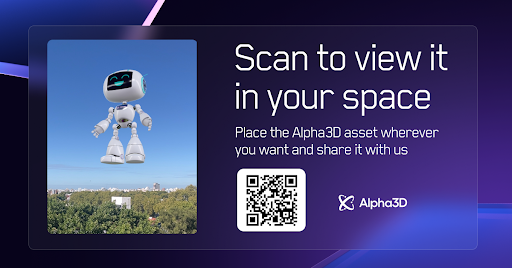
The interactive and immersive nature of 3D design is particularly suited to industries, where the user experience is critical to success.
So let’s jump in and look at some cool use cases from different industries for 3D design:
Gaming
At the forefront of 3D design use cases, we’ll find the gaming industry. 3D design is crucial for gaming as it creates an immersive and interactive experience for gamers. With 3D technology, game developers can create realistic and visually stunning environments, characters, and objects, making the game world feel more lifelike and believable.
Moreover, 3D technology enables games to have more dynamic and complex gameplay mechanics, allowing players to interact with objects and characters in new and exciting ways. This adds a layer of depth and challenge to the game, keeping players engaged and invested.
Additionally to video games, 3D technology allows for the creation of virtual reality (VR) and augmented reality (AR) games, which have become increasingly popular in recent years. These games allow players to enter fully-realized 3D worlds, interact with them in real-time, creating a truly immersive experience and enabling them to feel like they are part of the game world.
In short, 3D design is essential for the gaming industry as it enhances the overall gaming experience, creates more engaging gameplay, and allows for the development of new and exciting game genres like VR and AR games.
Examples:
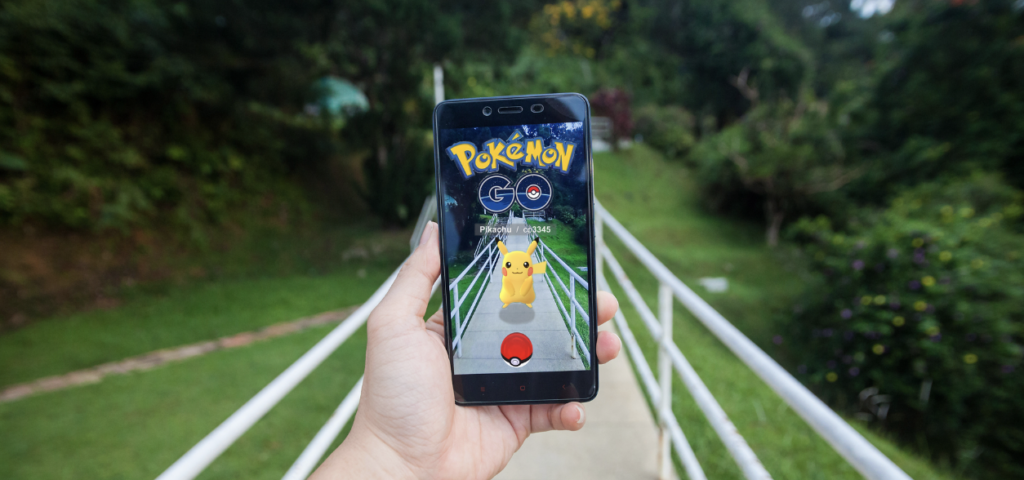
The augmented reality (AR) mobile game Pokemon Go was created by Niantic and The Pokemon Company. With its July 2016 debut, the game instantly went viral throughout the world.
In Pokemon Go, users explore the real world while catching virtual Pokemon monsters using their mobile devices. The game creates an AR experience where the player can view and interact with digital 3D Pokemon characters in the real world using GPS and the camera of their mobile device.
Metaverse
The metaverse is a virtual world that is being developed by combining different types of media and technology. One of the key components of the metaverse is 3D design, which is used to create immersive and interactive environments for users.
3D design can be used to create virtual objects, buildings, and landscapes, allowing users to explore and interact with the metaverse in a more realistic way. Additionally, 3D design can be used to create avatars and virtual representations of real-world people and objects, enabling users to interact with each other in a virtual environment. This not only provides a more engaging experience but also allows for new forms of social interaction and collaboration.
From Fortnite to Decentraland, the primary metaverse revenue opportunity consists largely of the existing gaming software and services as well as rising sales of gaming hardware.
Industry experts anticipate metaverse revenues of $800 billion by 2024, with steady 13.1% year-on-year growth. At the same time, 9.86 million VR headsets were shipped worldwide in 2021, and sales of 14.19 million were projected for 2022. So it’s no surprise that a lot of brands have already taken the leap into the metaverse.
Examples:
Decentraland
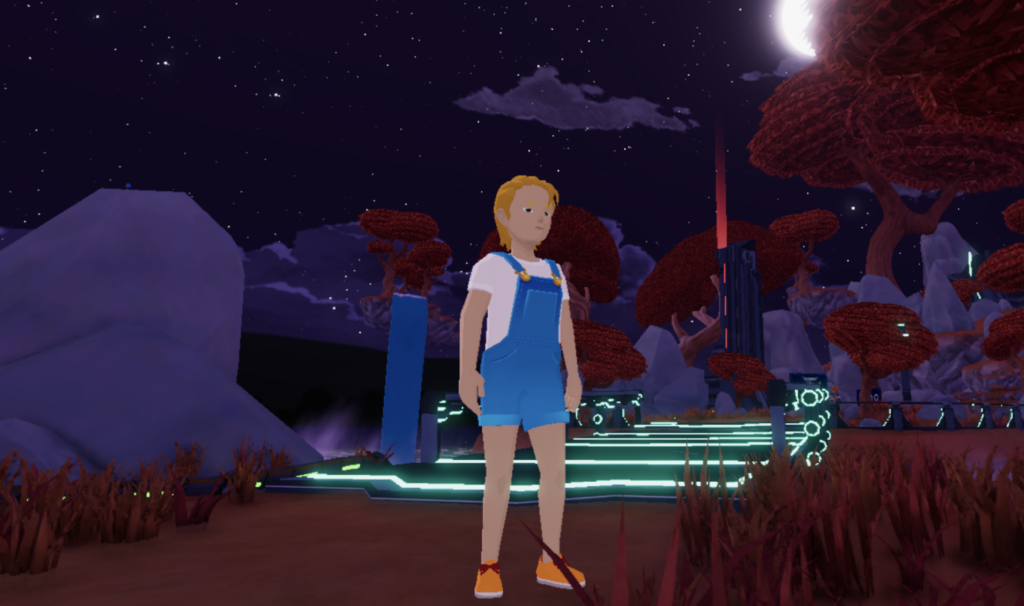
Decentraland is a blockchain-based virtual world that allows users to create, experience, and monetize their content and applications. It is built on the Ethereum blockchain and uses the decentralized nature of blockchain technology to enable users to own and control the digital assets they create and use in the virtual world.
In Decentraland, users can explore a vast virtual world where they can interact with other users and participate in various activities. They can create and customize their avatars, build their own virtual homes and buildings, and even design and program interactive games and experiences.
Decentraland’s use of 3D design creates a highly immersive virtual environment where users can explore and interact with the virtual world just as they would in real life. This creates a unique and engaging experience that enables users to express their creativity and engage with others in new and exciting ways.
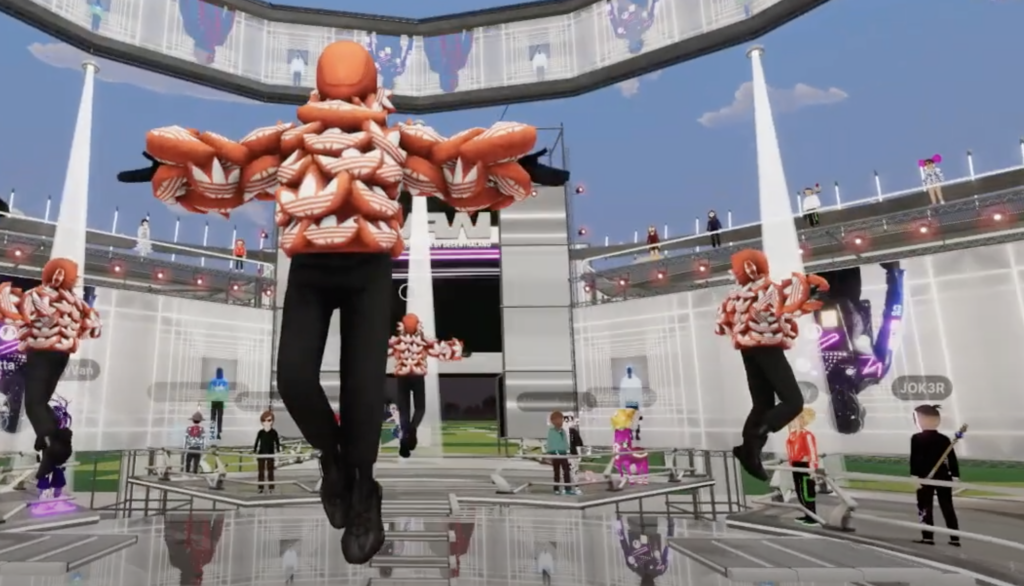
For example, every year the Metaverse Fashion Week is held annually in Decentraland. The event showcases the latest trends in virtual fashion and design and features a range of virtual runway shows, exhibitions, and presentations.
During Decentraland Fashion Week, designers, such as Dolce & Gabbana, Tommy Hilfiger, COACH, adidas, DKNY, and creators from around the world showcase their virtual fashion collections, which are created using 3D design. The collections are then presented in virtual runway shows, where users can watch and interact with the models and designs in real-time.
E-commerce
The use of 3D design is transforming the way e-commerce and online retail operate, enabling customers, specifically the new-age consumers: Millenials, Gen Z, and Gen Alpha, to have a more realistic and immersive shopping experience.
3D design can be used to create virtual product tours, allowing customers to explore products from different angles and get a better sense of their size, shape, and texture. This helps customers to make more informed purchase decisions, reducing the likelihood of returns and increasing customer satisfaction.
Additionally, 3D design can be used to create virtual try-on experiences for clothing and accessories, enabling customers to see how products will look on them before they make a purchase. This not only provides a more engaging experience but also reduces the risk of customers receiving products that do not fit or meet their expectations. Moreover, 3D design can be used to create personalized products, allowing customers to customize products to their specific needs and preferences. By using 3D design in e-commerce and online retail, businesses can improve customer engagement, reduce returns, and increase sales.
– According to Shopify research, retailers who add 3D design to their stores see a 94% conversion lift on average
– In a 3D marketing study by Cappasity, 82% of participants used the 3D product view. In addition, the study says, “95% of respondents preferred an interactive 3D experience to video playbacks”
– Amazon has discovered that user engagement increased by 66% with a 3D technology configurator compared to 2D marketing solutions.
Examples:
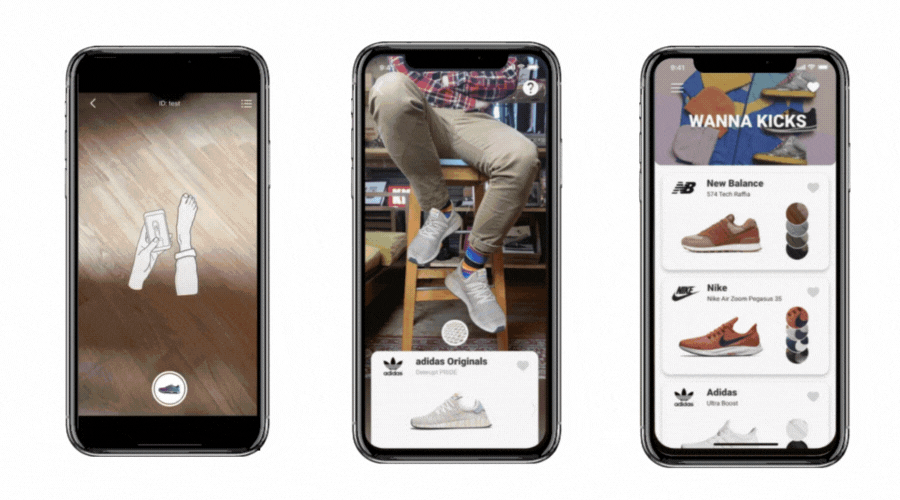
Wanna is an augmented reality (AR) sneaker try-on app that allows users to virtually try on and buy sneakers. The app uses AR technology to create a virtual 3D representation of sneakers that can be placed on the user’s feet, giving them a realistic and accurate impression of how the sneakers would look in real life.
Users can browse a wide range of sneakers from top brands, select a pair they like, and then use the app to virtually try them on. The app uses the camera of the user’s mobile device to scan their feet and create a 3D model that matches the shape and size of their feet. Users can then use the app to place the virtual sneakers on their feet and see how they look from different angles.
In addition to trying on sneakers, users can also purchase sneakers directly from the app, making it a convenient and seamless shopping experience. The app provides detailed information about each pair of sneakers, including pricing, size availability, and product specifications.
The innovative app that provides a fun and engaging way for users to try on and buy sneakers without having to leave their home. Its use of AR technology creates a highly realistic and immersive experience that can help users make more informed purchasing decisions.
Architecture and Real Estate
In architecture and real estate, 3D design is becoming an increasingly popular tool for creating accurate and detailed visualizations of buildings and properties. 3D modeling software allows architects and real estate developers to create realistic, interactive 3D models of their designs, which can be used to communicate ideas to clients, investors, and other stakeholders. These 3D models can be used to explore different design options, identify potential problems, and make necessary changes before construction begins, saving time and money. In addition, 3D design can be used to create virtual tours of properties, providing potential buyers with a more realistic and engaging experience of the property.
Additionally, by using augmented reality to overlay 3D models (such as furniture) onto real-world spaces for interactive design and planning, architects, interior designers, and real estate developers can create more accurate and detailed visualizations, which can help to improve decision-making and increase customer satisfaction.
Test it yourself! You can view this cupboard in 3D and place it in your space:
https://3d.alphaar.io/8d0498a7-cdbd-4162-a5c8-c3afc3e5b2f9
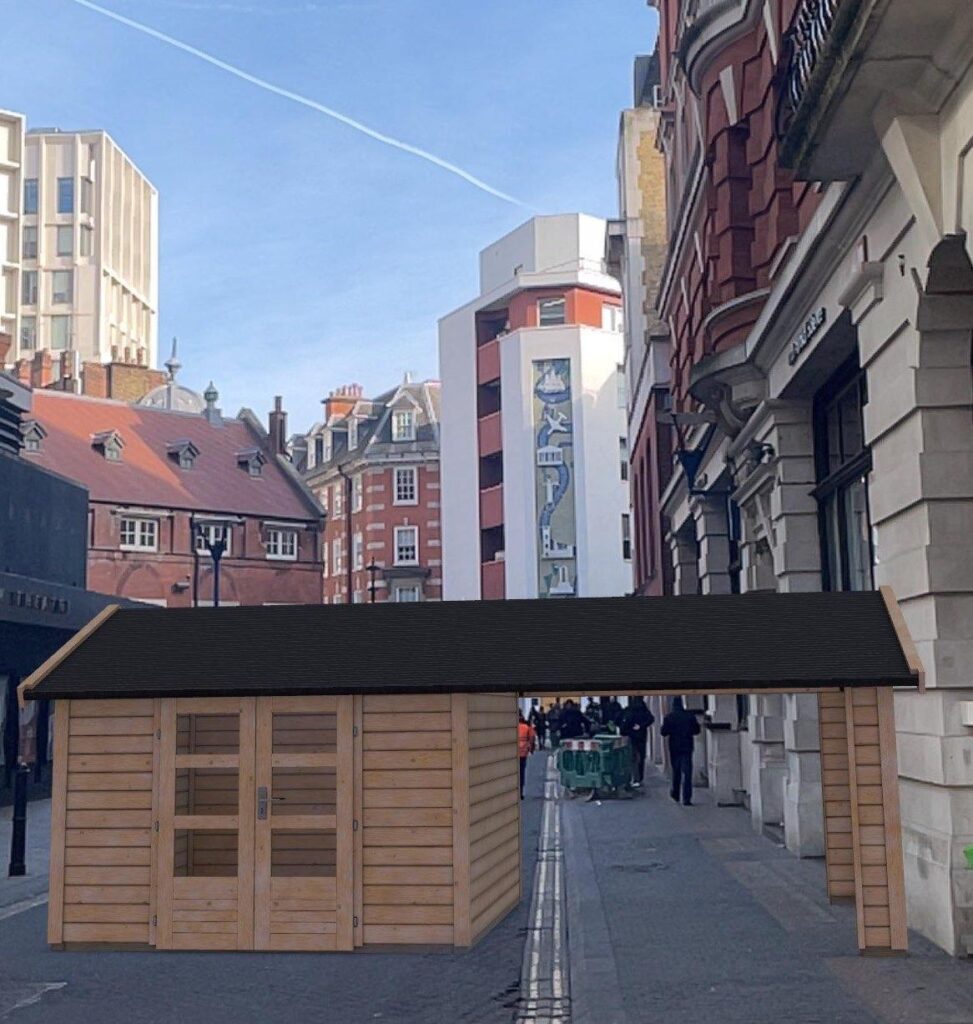
Product Design and Manufacturing
In the case of manufacturing and engineering, 3D design offers engineers and designers a way to visualize and test designs before production. 3D design can be used to create virtual prototypes, which can be tested and refined in a virtual environment, allowing engineers to identify and fix potential problems before the product is manufactured.
Additionally, 3D designs can be used to create accurate visualizations of products, which can be used for marketing purposes. For example, 3D designs can be used to create product demos, explainer videos, and other marketing materials, giving potential customers a more engaging and realistic experience of the product. We’ve even seen some cool companies use 3D product models for market validation via their audience, before sending anything into production.
3D designs can be used to create custom products, allowing manufacturers to create unique products tailored to specific customer requirements. By using 3D designs in manufacturing and engineering, businesses can reduce costs, improve product quality, and increase customer satisfaction.
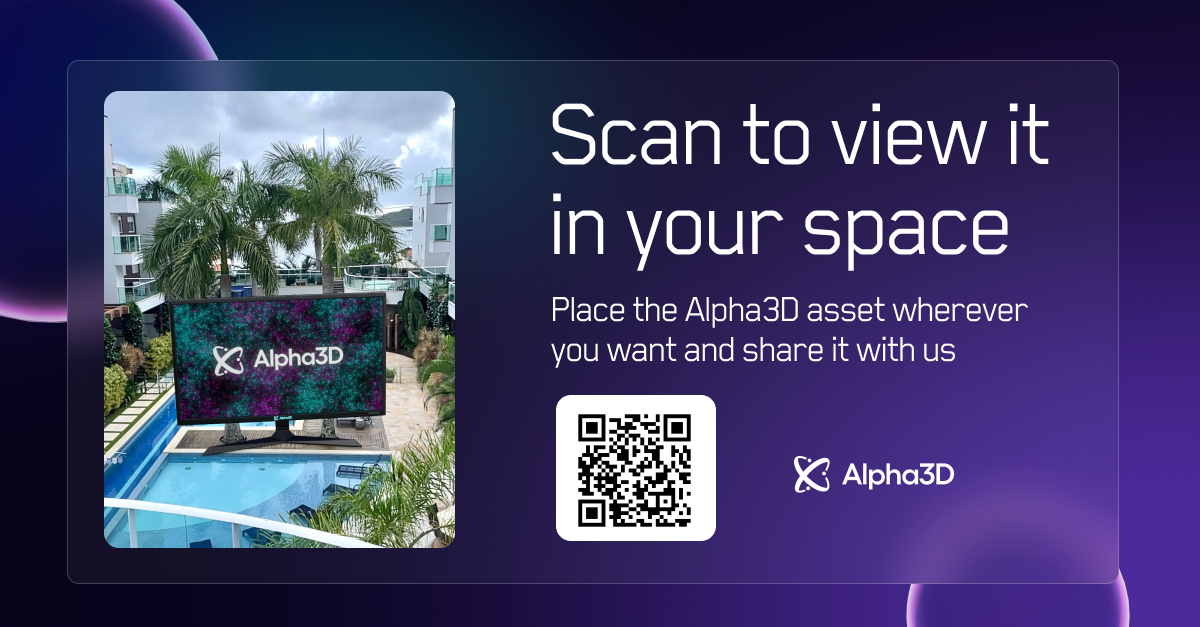
Test it yourself! View an Alpha3D TV screen in 3D and AR 👆
Education and Training
The use of 3D designs in education and training have been growing in recent years, offering students and professionals immersive and interactive learning experiences. It is a known fact that the human brain processes visuals 60 000 times faster than text. 3D design can be especially useful in visually explaining complex concepts by simulating real-life scenarios.
For example, in medical education, 3D design is used to simulate surgeries and anatomy, allowing students to practice in a risk-free environment.
Additionally, 3D designs are used in industrial and vocational training to simulate complex machinery and equipment, allowing trainees to gain practical experience in a safe environment. AR also allows students to learn at their own pace, and the interactive nature of 3D content makes it easier for students to engage with the material. As the use of 3D designs continues to expand in education and training, it has the potential to transform the way we learn and acquire new skills.
3D designs also enable VR experiences in education making learning more interactive and engaging by providing students with virtual lab environments, field trips to museums, historical sites, other planets and even recreate a virtual hurricane right inside the classroom.
Examples:
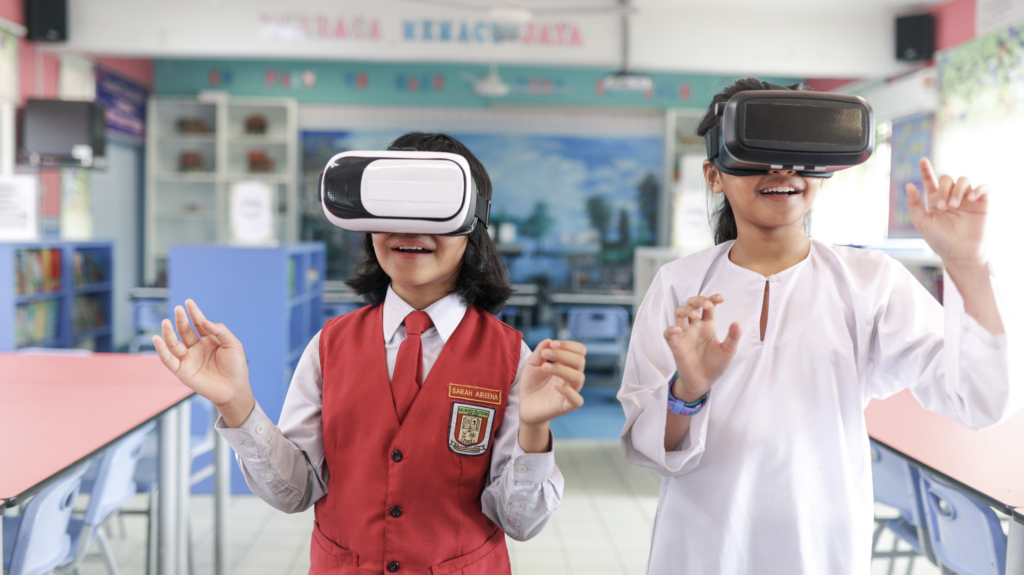
ClassVR is a VR platform designed for use in education. The platform provides a range of VR experiences and educational content that can be used by teachers and students to enhance learning, engagement and help students understand complex concepts and ideas in a more engaging and memorable way.
Teachers can use the platform to create and deliver immersive VR experiences that bring their lessons to life, covering subjects such as science, history, geography, and art.
Healthcare and Medicine
When it comes to healthcare practices, 3D designs can be used to create patient-specific models of anatomical structures, such as organs, bones, and blood vessels, allowing surgeons to plan and practice complex surgeries before they are performed. This not only reduces the risk of complications but also allows for more precise and effective procedures. In medical research, 3D design is used to create accurate models of biological systems, allowing scientists to study diseases, develop new treatments, and test medical devices in a virtual environment. By using 3D designs in healthcare and medicine, the industry can improve patient outcomes, reduce costs, and accelerate the pace of medical innovation.
According to this study from Harvard Business Review, VR-trained surgeons had a 230% boost in their overall performance compared to their traditionally-trained counterparts.
Examples:
Osso VR is a virtual reality (VR) platform that provides a realistic and immersive training environment for medical professionals. The platform uses VR technology to create lifelike simulations of medical procedures and surgeries that can be used for training and continuing education.
Users can interact with the VR simulations using hand-held controllers, which allow them to manipulate and operate virtual medical tools and equipment. The simulations are designed to be highly realistic, featuring accurate anatomical models and realistic physics and feedback.
Marketing and Advertising
3D technology is changing the future of the brand and consumer relationship. Using 3D designs in marketing and advertising can offer businesses a new way to create more engaging and immersive experiences for their customers.
3D designs can be used to create realistic and interactive product demos, explainer videos, and other marketing materials, allowing customers to experience products in a more engaging way.
Additionally, 3D content can be used to create virtual showrooms and stores, allowing customers to explore products in a virtual environment. This not only provides a more immersive experience but also enables businesses to showcase their products to a wider audience without the need for physical events. Another interesting use case for 3D content is personalized products, tailored to the customer’s unique needs and preferences. By using 3D designs in marketing and advertising, businesses can increase customer engagement, improve brand awareness, and drive sales.
Examples:
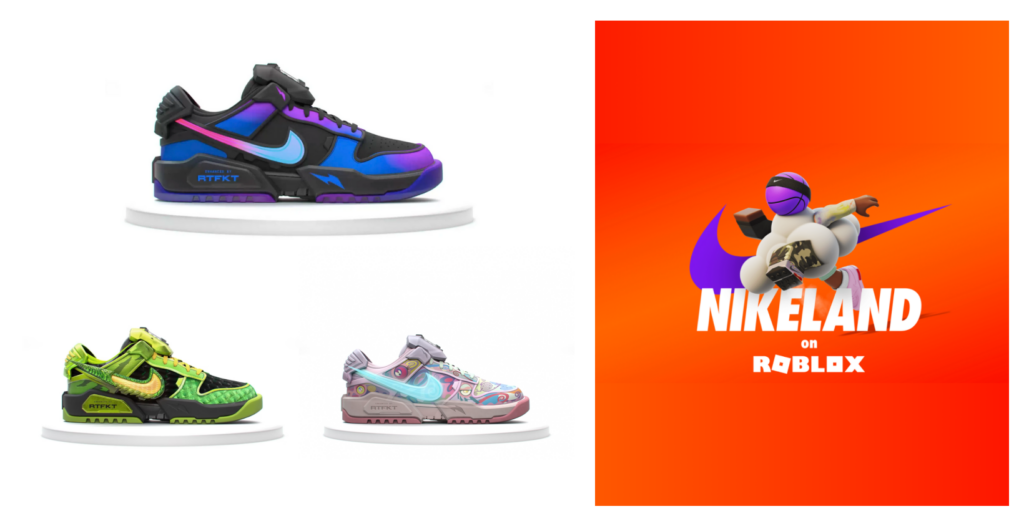
Let’s take Nike as an example, the retail giant has always been at the forefront of digital transformation. Artificial intelligence (AI), e-commerce, and in-store experiential technology have been integral to the brand’s strategy for many years. In fact, the brand was among the first multinational companies to introduce 3D technologies in their e-commerce business. And now, in a bet that the virtual world will forever transform the industry, has created virtual stores to drive e-commerce, and subsequently, new revenue streams.
What’s more, the retail giant has created a digital space, called “NIKELAND“, where visitors can enjoy celebrity appearances from sports stars, including LeBron James, as well as buy exclusive digital products to decorate their avatars with. They can also test their reactions and strategy skills with a number of games, with the opportunity to win even more products and rewards.
How to get started with 3D design?
Creating 3D designs is known to be costly and time-consuming. However, with tools such as Alpha3D’s AI-powered 3D content creation platform, you can generate 3D digital assets with just one 2D image input in just a few minutes. Feel free to use your own product images or use Alpha3D’s text-to-image AI feature to generate a brand new image to turn into a 3D model. Get started and generate your first five 3D models.





